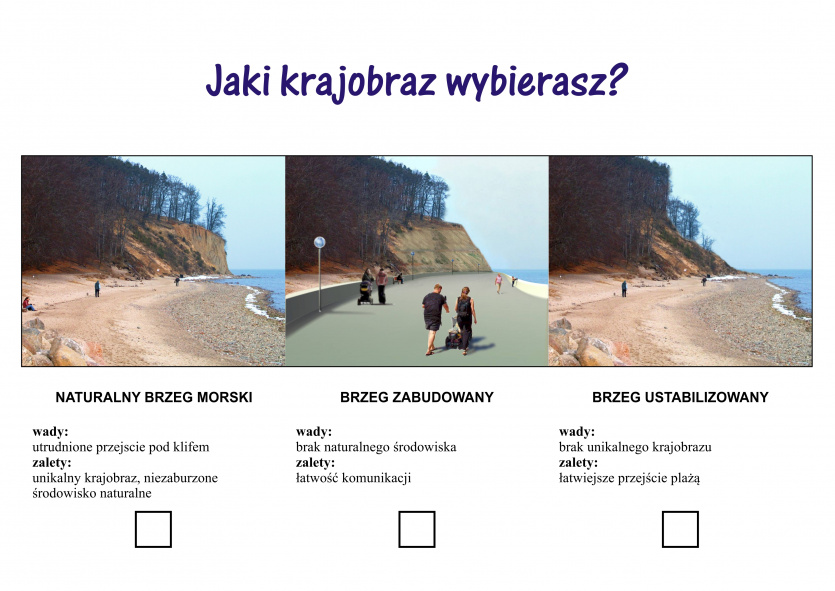A windy and stormy February affected the erosion of the cliff in Orłowo. Once again the discussion on its condition and possible actions resumed. The position on this matter was taken by the directors of three Tricity scientific institutions dealing with marine research. In their opinion, the cliff should remain free of human interference.
A common position on the cliff in Gdynia-Orłowo and the surrounding beach was expressed by the directors of three sea research institutes: director Mariusz Sapota - Institute of Oceanography at the University of Gdańsk in Gdynia, director Piotr Margoński - MIR, National Research Institute in Gdynia, and director Jan Marcin Węsławski - Institute of Oceanology of PAS in Sopot.
The cliff in Orłowo is one of the landscape icons of the Polish coastline and probably the most photographed seascape in the Tricity. Since the 1930s it has been protected as a Nature Reserve and since Poland acceded to the EU it is part of the Nature 2000 area (habitat and bird area). At its foot is another object protected by EU law - stone reefs overgrown with a rich community of marine plants and animals.
The slipping clay cliff has always been controversial. According to many engineers, the seashore should be protected by a concrete band - such as the Boulevard in Gdynia. Others believe that a series of underwater breakwaters is needed to weaken the flow of waves onto the shore and stabilise erosion. A 1993 recommendation issued by the most important international organisation dealing with the environment of the Baltic Sea (Helcom) states that natural coastal processes should be protected wherever there is no need to protect important cultural heritage or infrastructure.
The joint position of the directors reads that scientific research conducted by many institutions in this area says
- cliff erosion occurs from the land and not from the sea, as a result of rain, frost and wind, the sea only takes away material sliding from the land,
- the cliff is so spectacular only because the sea keeps removing the material, if this process is stopped the cliff will turn into a slightly sloping slope,
- the process of coastal retreat is not infinite - the cliff will eventually build itself a natural breakwater of thicker material (boulders), which the waves will not take away,
- any engineering interference with the shore causes an avalanche of consequences for the natural processes of water flow, wave action and debris transport. Underwater thresholds only protect the area immediately behind them, beyond the last threshold there is again increased erosion. To keep the beach in place, a series of thresholds would have to be built all the way to the port of Gdańsk.
- 'What happens next with the cliff depends on what decisions we make. The cliff will remain only if we do not interfere with natural processes. Otherwise, after some time it will simply become a hill. It all depends on what kind of place we want to have,' concluded dr hab. Mariusz Sapota, prof. UG from the Faculty of Oceanography and Geography, UG.
Twenty years ago, after a series of autumn storms washed out the beach behind Orłowo pier, a survey was conducted among walkers on Tri-City beaches in response to residents' concerns. Maybe it's worth repeating?

